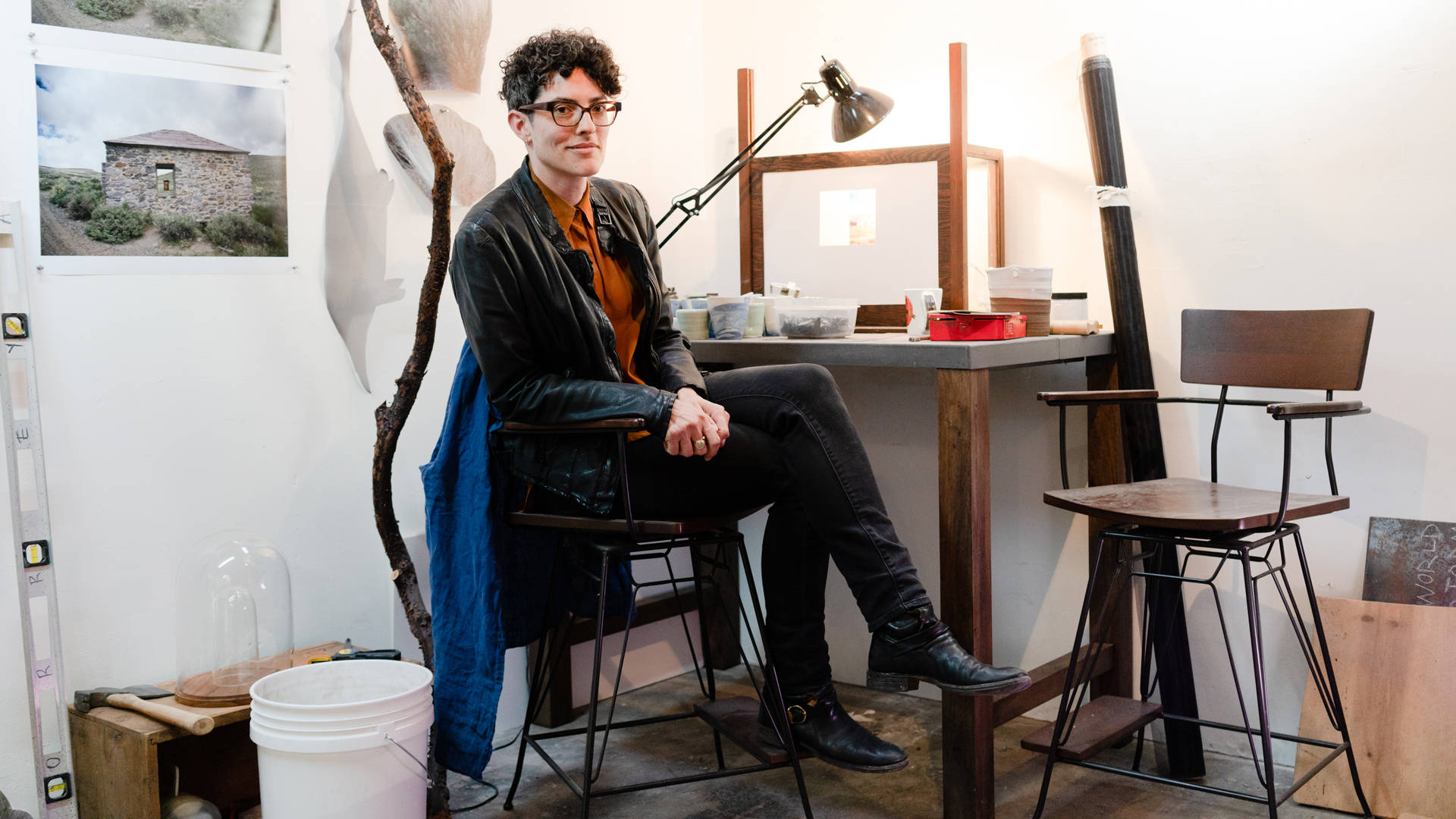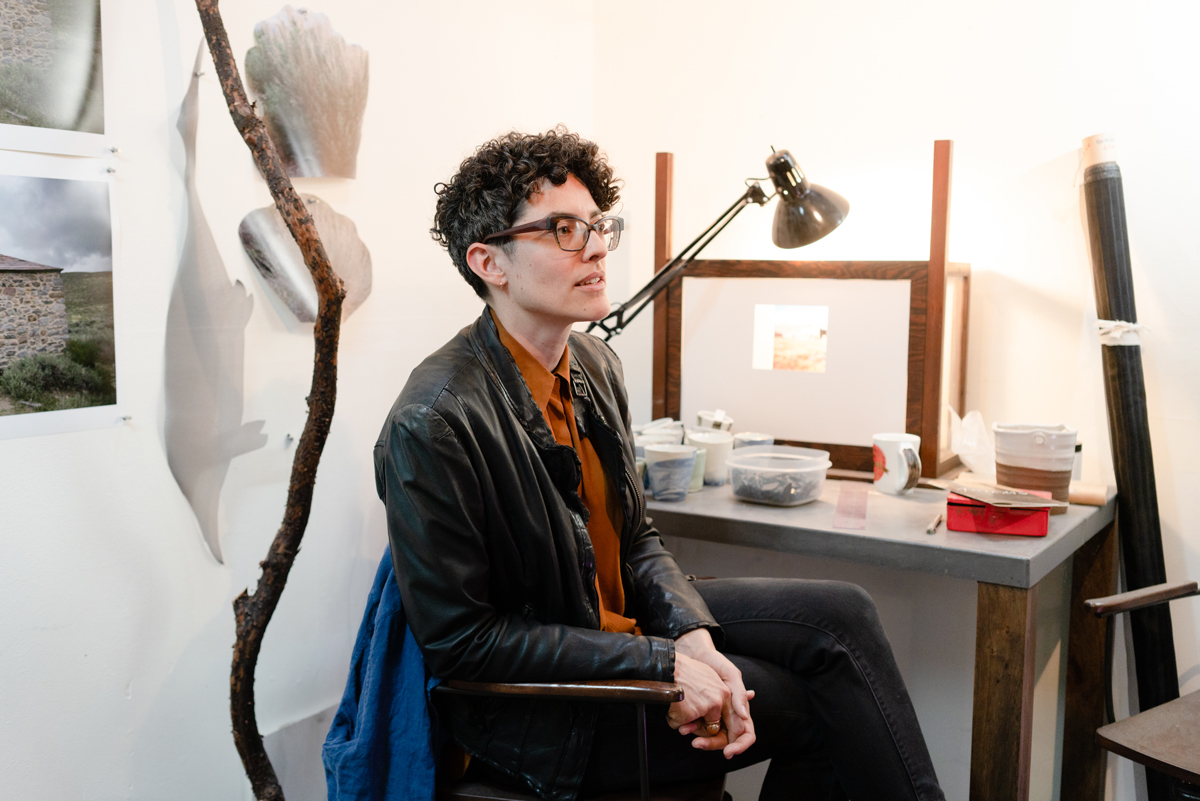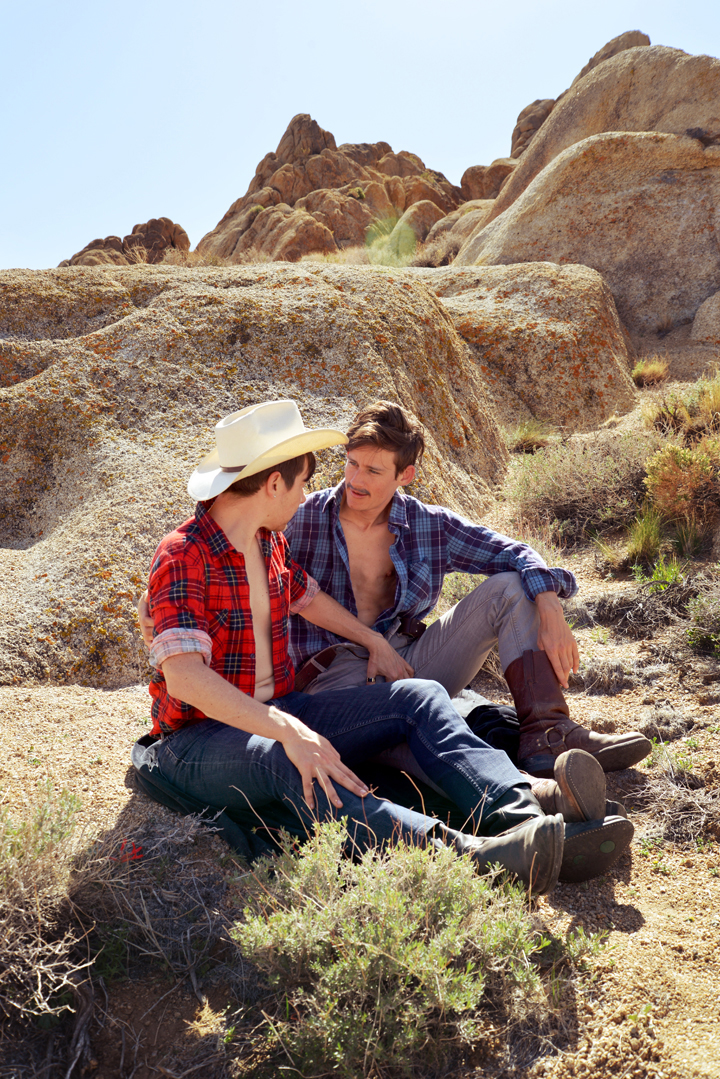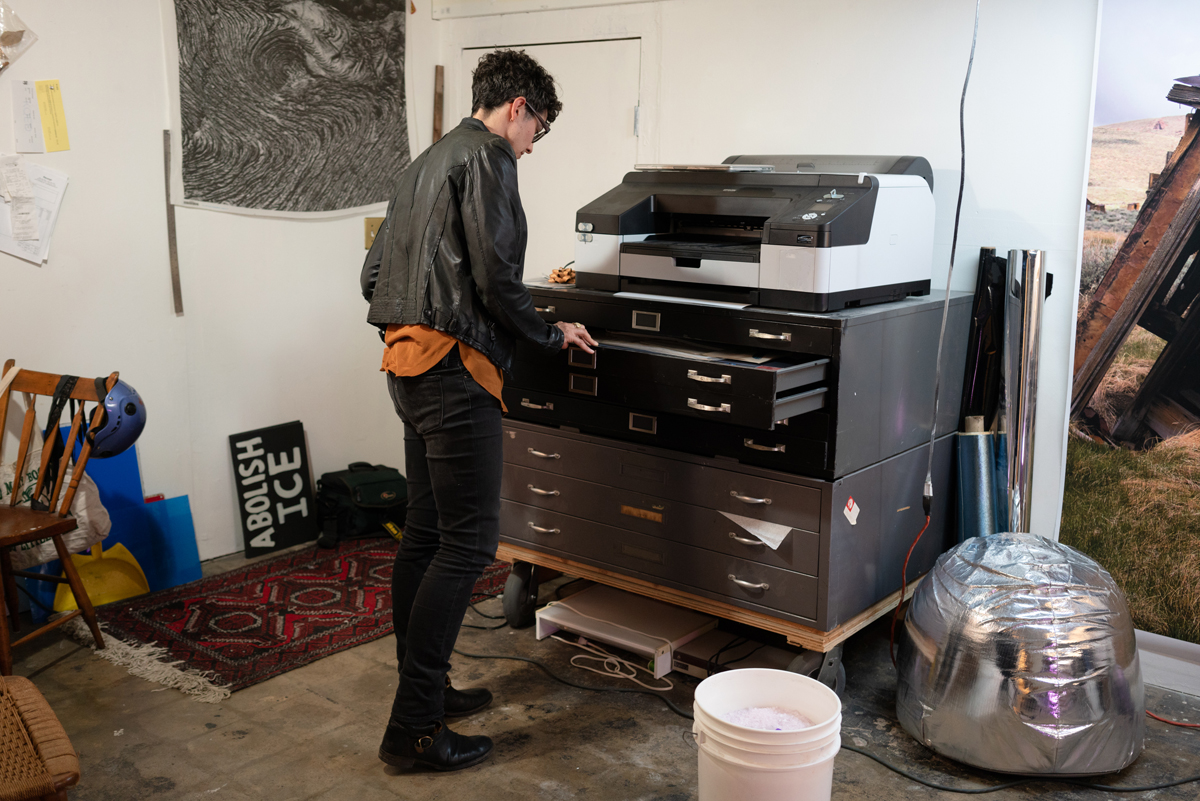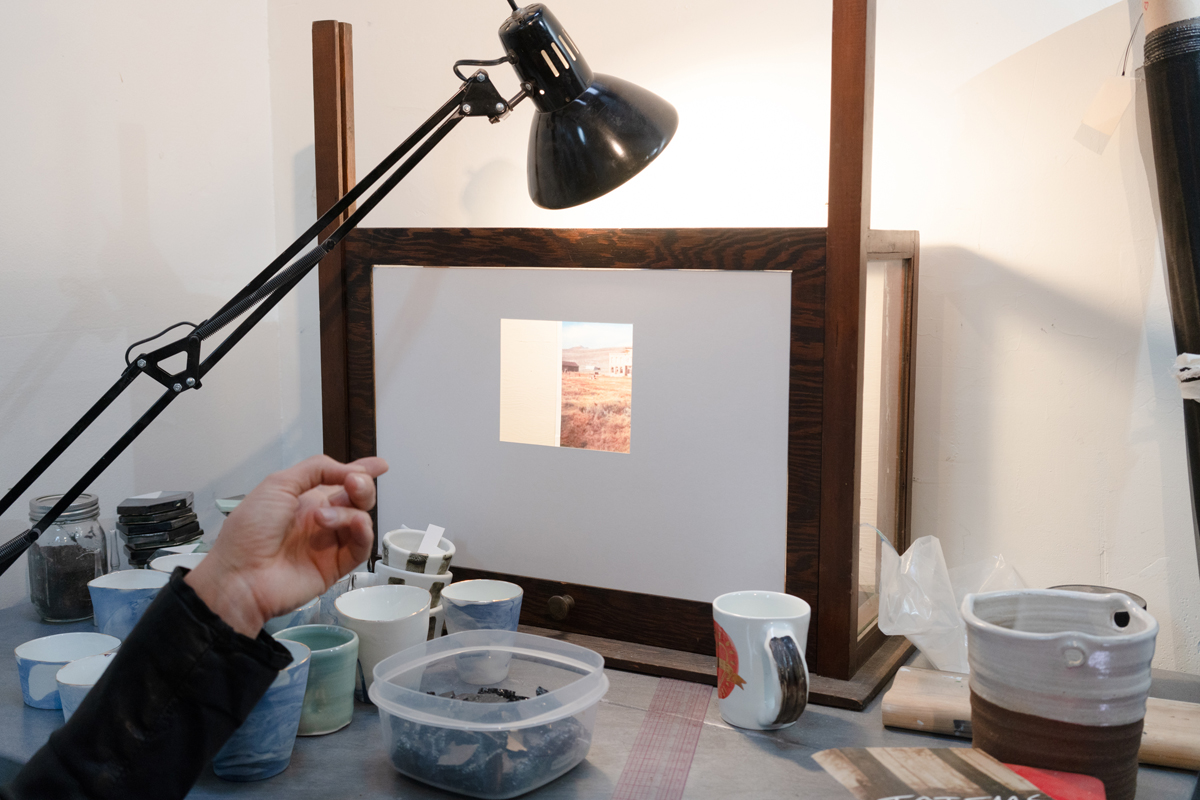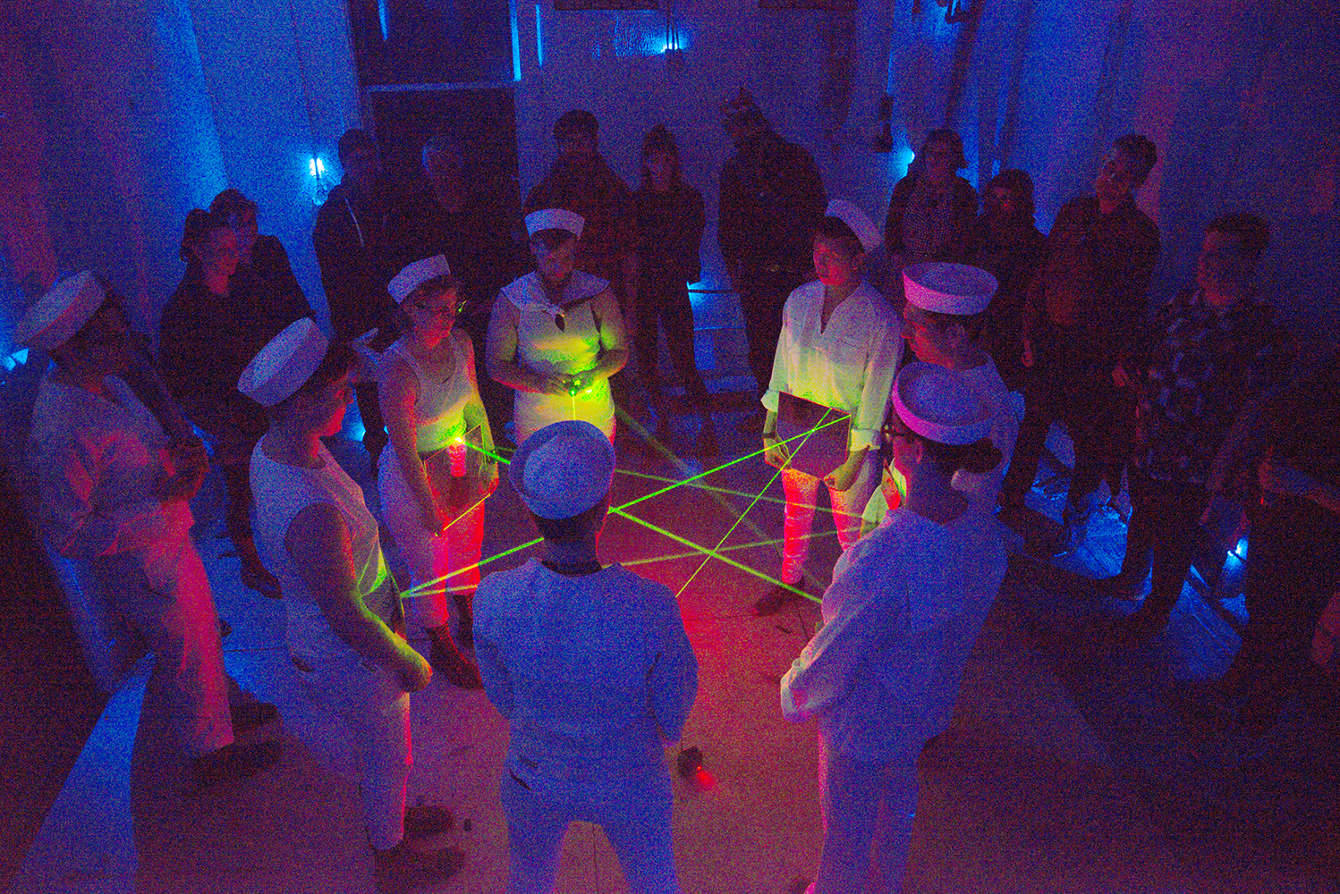Welcome to KQED Arts’ Redefining Pride: The East Bay’s Queer Artists, a series highlighting the work of queer-identified artists in Oakland and Berkeley. Through printmaking, photography, painting and interdisciplinary work, these visual artists celebrate people, histories and causes often sidelined within mainstream presentations of the queer community.
For many, the phrase “landscape art” evokes paintings of rolling hills and photographs of desert horizons. But these are two-dimensional renderings of three-dimensional spaces, spaces replete with sounds, scents and textures. For interdisciplinary artist Torreya Cummings, such flattening is counterintuitive; landscapes are multisensory terrains meant to be explored.
“I spent a lot of time outside as a kid,” Cummings says of her rural upbringing in the Central Valley. “Landscape has never seemed like a static thing. It’s an environment that you’re in, and it’s complex. You’re not just looking at it, you’re experiencing and interacting with it.”
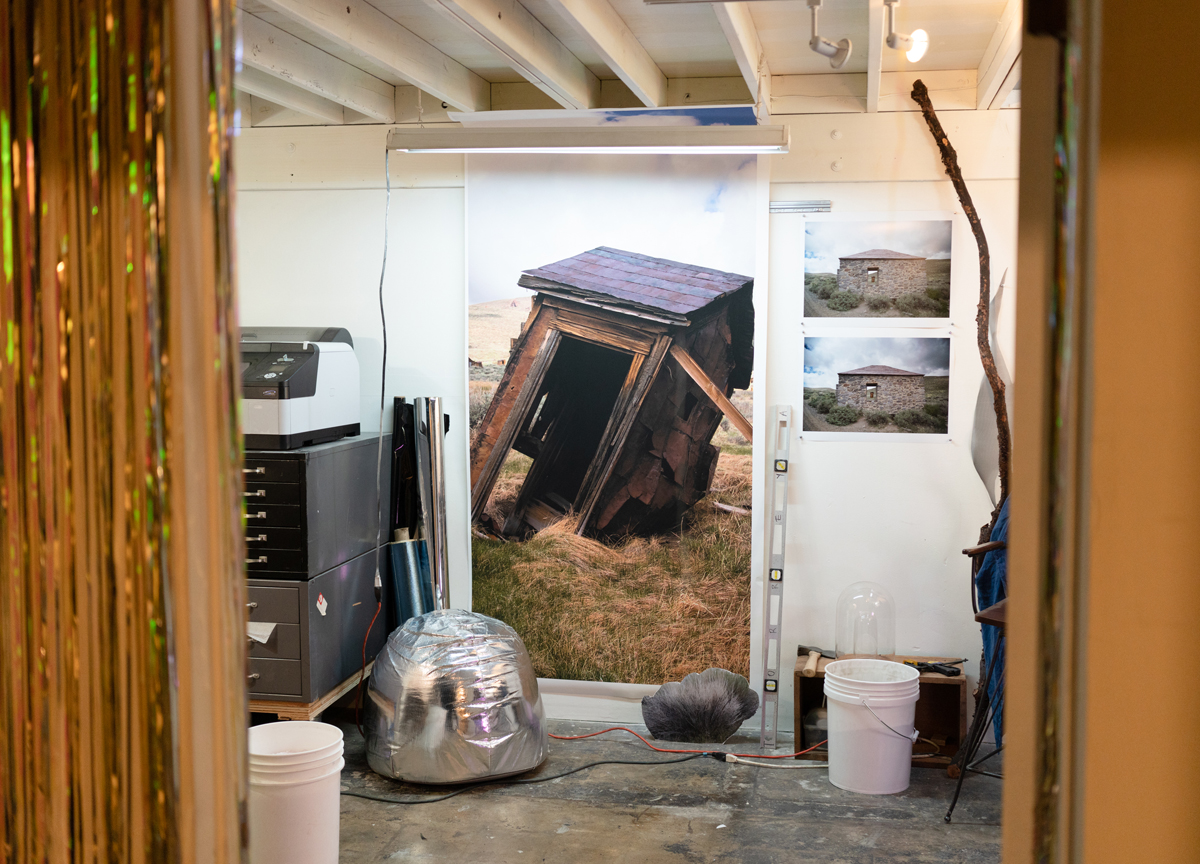
This attitude helps explain the artist’s multidimensional work, which tends to invite viewers to enter a temporary site, whether a built environment or a site-specific performance. In a sense, she creates experiences for people to roam through like a real landscape, though on a much smaller scale than a forest or field.
A recent multimedia installation commissioned by and on view at Oakland Museum of California for just under two years (it closed at the end of April 2018) encapsulated that approach. In Notes from ‘Camp’: AKA Transdimensional Ghost Town Discotheque, the three-dimensional environment married a desert-town-inspired shanty with a (frankly) fabulous iridescent interior. Videos of shimmering crystals, streams and fish played to the sounds of 1970s disco.
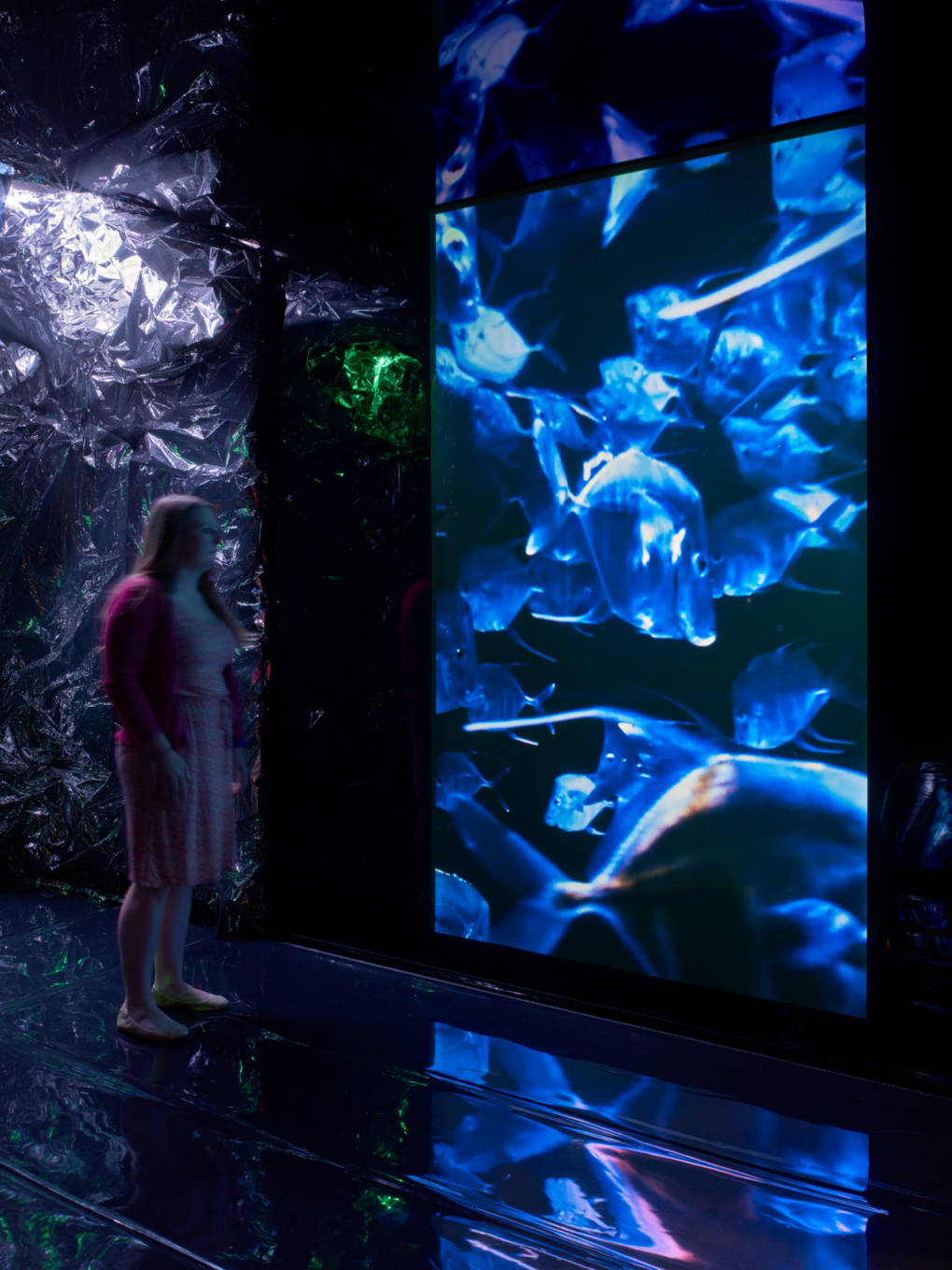
The work provided a way for Cummings to play out her curiosity about the supposed opposites of “rural” and “urban” spaces, partially inspired by a foundational 1964 text written by theorist Susan Sontag that discussed the concepts behind “camp,” an attitude expressing a penchant for kitchy, over-the-top aesthetics. Sontag poses “natural” in strict opposition to camp’s connection to the “urban” and to “artifice”—two notions firmly associated with modern queerness, as is camp itself.
Cummings’ sparkling hut is a spirited, if ambivalent, rejoinder to the essay; the installation not only allows contradictions to coexist, it seemingly celebrates them all. The installation also made tangible the perspective of a queer person who has traversed both rural and urban realms and felt, in both, equally valid senses of belonging and detachment.
